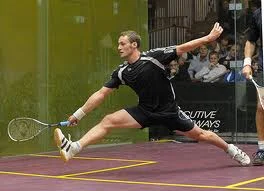Welcome to the third and final installment of my best athlete in the world series. In this post I will actually name the winner. But first a quick review of my existing ground rules, and the addition of two additional criteria that will narrow things down to our winner pretty quickly. As I discussed in parts one and two, my best athlete must have strength, speed, stamina and skill, with skill being the most important quality.
Read MoreWelcome to part two of my argument for who is the world's greatest athlete. Here is a brief summary of part one. First, I concede there is no way to arrive at a truly objective answer here, because it necessarily calls into play subjective preferences. However, after starting with some admittedly arbitrary ground rules, I think I can logically proceed to a defensible conclusion. I know this sounds more like a legal argument than a bar room sports debate, but believe me, this analysis will go far beyond what you probably guessed!
Read MoreI have heard many arguments about who is the world's best athlete. To be honest, most of them are completely idiotic. But let's face it, if you ask a stupid question you get a stupid answer. And that's what I have done here, because I enjoy the occasional bar room debate.
Read MoreI have made the claim several times on this blog that quality of movement is primarily determined by its efficiency. In fact, I have stated that "efficiency is the "essence of coordination" and that the best movement is always the most efficient movement.
Read MoreFatigue is a Brain-Derived Emotion that Regulates the Exercise Behavior to Ensure the Protection of Whole Body Homeostasis. The basic idea is that human exercise capacity is not limited by a failure of the body, but is instead regulated by the brain to ensure that such a failure does not occur. Here is a brief summary of some of the highlights of the article.
Read MoreIn the previous post I discussed the idea that flexibility is generally overrated as a quality that promotes sports performance. In particular, I argued that: most sports do not involve extreme ranges of motion; most elite athletes in fact have only average flexibility; and quality of motion at a joint is usually far more important than quantity of motion. That being said, it is definitely the case that in many sports, some very important events happen near the end ranges of motion and this may require some very specific preparation. For example, in my own sport, squash, players are called upon to repeatedly strike the ball with full force while in a fully stretched out deep lunge position. While most people have the flexibility to get into this lunge, it does take quite a bit of training to be able to get there quickly and then hit a ball with maximum force. In this post I’ll share some thoughts on how to improve power, speed or skill at end ranges of motion.
Read More
